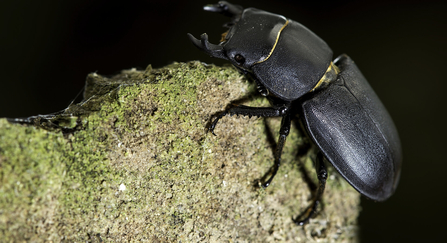The British public is being asked to keep an eye out for spectacular stag beetles this summer and record any sightings online, as part of a wildlife charity’s national Great Stag Hunt survey.
The Great Stag Hunt, run by People’s Trust for Endangered Species (PTES), has been running for over 25 years. Native stag beetles – with the males’ iconic antler-like jaws – have sadly become extinct in parts of in Britain and Europe, where they used to live. Data from the Great Stag Hunt, collected since 1998, is vital for conservationists to understand where stag beetles remain, where they’re no longer living and what the impact of climate change might be on populations.


